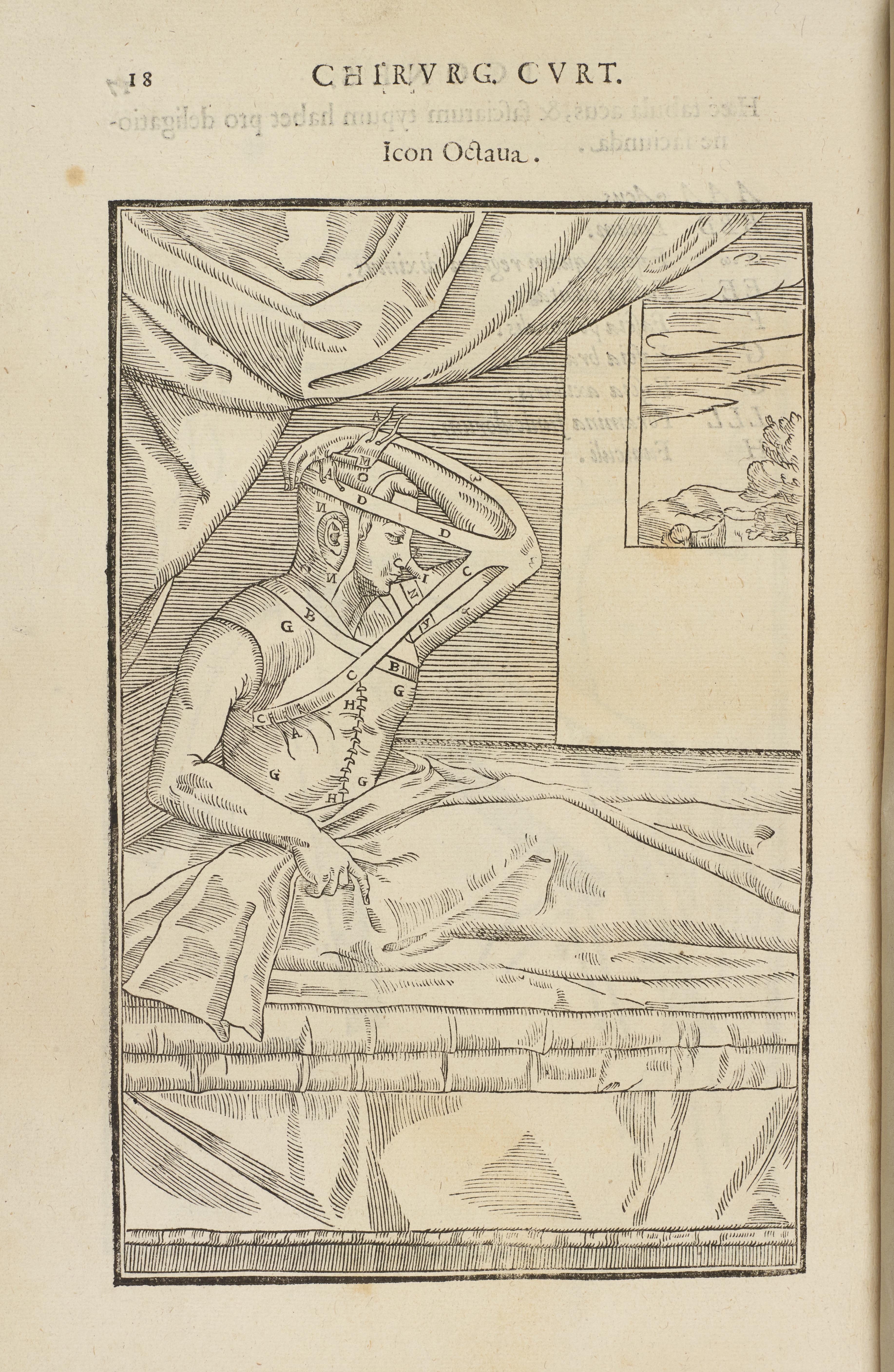
Title: ‘Surgery patient,’ in Gaspare Tagliacozzi, De curtorum chirurgia per insitionem (On the surgical restoration of defects by grafting), plate 8
Place: Published in Venice by Gaspare Bindoni
Date: 1597
Medium & technique: Woodcut on paper
Dimensions: 322 x 215 mm
Themes: Bodies – Inside & Outside
Collection: The John Rylands Library, (c) The University of Manchester
Gaspare Tagliacozzi (1545–99) published his De curtorum chirurgia per insitionem (On the surgical restoration of defects by grafting) in 1597. Plate 8 shows a patient during the lengthy procedure to restore his nose. He is wearing a special vest and hood designed to ensure his arm is completely immobilised against the head. This was necessary because, in order to ensure the success of the operation, the skin destined for the patient’s nose had to remain attached to the upper arm whilst being grafted to the nose. Tagliacozzi estimated that this would take at least fourteen days out of the minimum three months required to complete the nose reconstruction. The procedure moved skin from one part of the body to another, a migration from the arm to the face and one that had its drawbacks since it was extremely difficult to form the skin flap into a convincing nose. Tagliacozzi believed that since the nose was necessary for smelling and speech, amongst other things, its lack had a severe impact. He therefore aimed to allow the patient to function in society without having to rely on a prosthesis, which was foreign to the body and could not be permanently attached. Read more about this object.
Cordelia Warr, University of Manchester
Further Reading:
Valeria Finucci, The Prince’s Body: Vincenzo Gonzaga and Renaissance Medicine (Princeton: Harvard University Press, 2015).
Martha Teach Gnudi and Jerome Pierce Webster, The Life and Times of Gaspare Tagliacozzi (New York: Herbert Reichner, 1950).
Paolo Savoia, ‘Nature or Artifice? Grafting in Early Modern Surgery and Agronomy,’ Journal of the History of Medicine and Allied Sciences 72/1 (2016), 67-86.